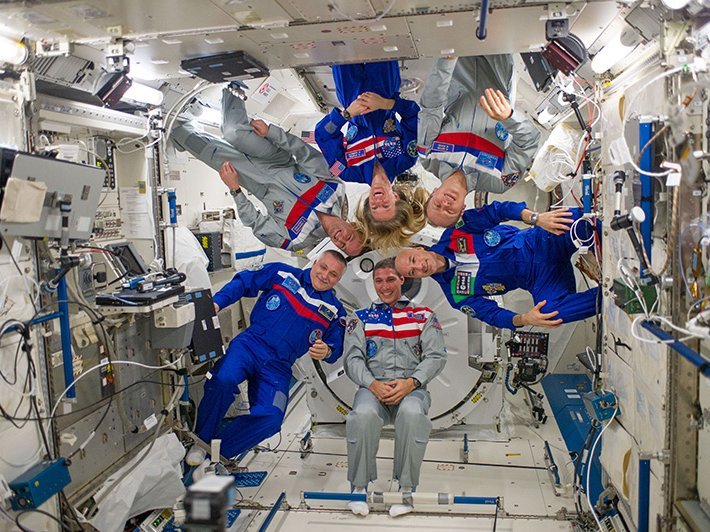Spot astronauts in space
Pages in this sectionTrack the International Space Station's path and explore inside
The International Space Station (ISS) is the biggest object ever flown in space. It measures about 110m by 80m by 30m, so slightly larger than a professional football pitch. It weighs around 450 tons, which is about the same as 65 elephants, or two and a half blue whales.
Thanks to its size and its many solar panels, the ISS reflects a lot of sunlight and is therefore easy to spot from Earth with the naked eye, even though it is 400km away. Ideally you need clear evening skies during the earliest hours of darkness, when your place on the surface of the Earth is in darkness but the ISS is still lit by the sun.
Where is the ISS now?
The ISS completes an orbit of the Earth in just 90 minutes, travelling at 7.66km per second (km/s).
The European Space Agency (ESA) has developed an ISS tracker so that you can find out its precise location at any given time. Use it to check when the space station is passing over your part of the planet. You could even sign up to receive alert messages to tell you when you might see the ISS in your area.
There are also smart phone apps, such as the ISS Detector, that help you locate the right place to look when the ISS is near your home, making it super-simple to see.
What's the ISS like inside?

The ISS is a wonder of human engineering and international cooperation; it is also humanity’s flagship microgravity research station. When astronauts, such as Tim Peake, are on board they also work as scientists and engineers.
See what life is like on board and explore inside by taking a panoramic tour inside the ISS.